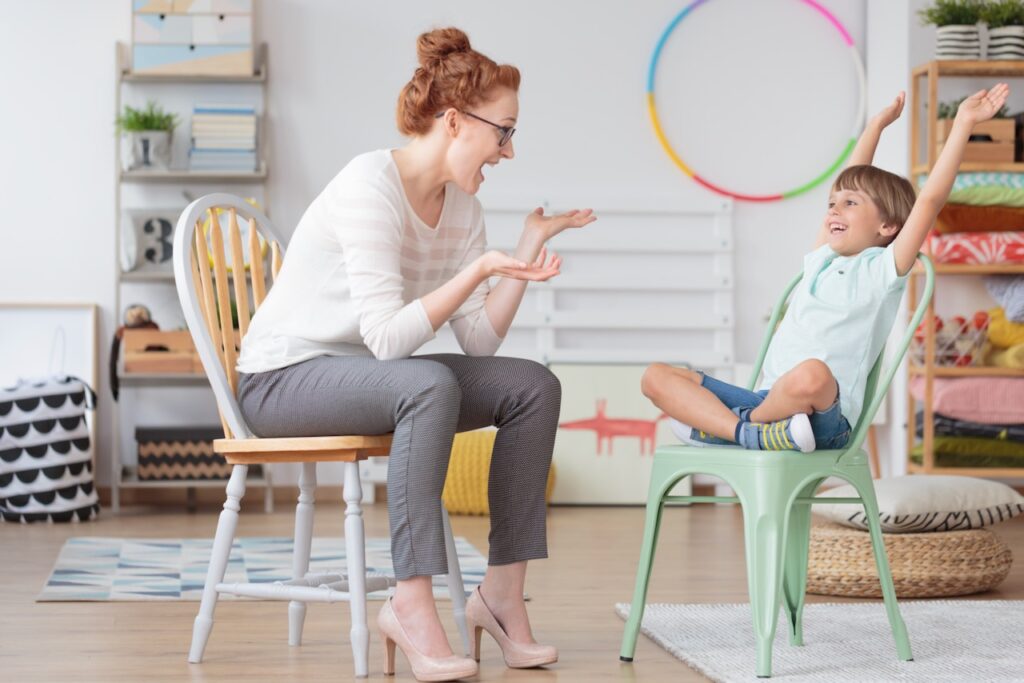| Refresh | This website greator.com/en/hyperactive-children/ is currently offline. Cloudflare's Always Online™ shows a snapshot of this web page from the Internet Archive's Wayback Machine. To check for the live version, click Refresh. |

Hyperactivity can occur at any age. Often, even a young child is hyperactive and unbalanced. Hyperactive children are usually restless and can hardly concentrate. Their hyperactive behavior makes them stand out negatively in kindergarten and at school.
Hyperactivity is a symptom and a disorder at the same time. The typical increased urge to move and the conspicuous mental excitability can be genetically determined. However, a variety of other causes are also possible triggers for hyperactive behavior.
Hyperactive children suffer from their disorder and the lack of understanding they receive from those around them. Not every overly active Child has ADHD. Attention hyperactivity deficit syndrome can only be diagnosed by a specialist after a thorough examination. Do you have hyperactive children or do you think your little ones are affected by hyperactivity syndrome? Here you can find out how to recognize hyperactivity and what you can do to support hyperactive children in their development.
The term "fidgety" is familiar to most of us from our own childhood. Nowadays, children who cannot sit still are referred to as hyperactive children. Hyperactivity means that the physical restlessness is strongly pronounced and clearly exceeds the normal childlike urge to move.
Hyperactive children are hardly able to sit still and cannot control their overactive behavior. Since they are constantly on the move and want to touch everything, they have a higher risk of injury than children who are not hyperactive.
Hyperactivity is described as a behavioral disorder that affects all areas of life. Children with this tendency are often overwhelmed and restricted in their development. Growing up is a great challenge for them. Is hyperactivity in a young child worth treating? Before any decisions are made, it should be ensured that it really is a hyperactive disorder.
Typical symptoms of hyperactivity disorder include concentration problems, inner restlessness and an excessive urge to move. In order to develop healthily, hyperactive children need a lot of support.
A distinction is made between two forms of hyperactivity. If the behavior is mainly characterized by inattention and not by hyperactivity, it is called ADS (attention deficit syndrome). The medical term ADHD stands for attention deficit hyperactivity disorder, because the "H" in ADHD indicates hyperactivity. Often, other terms are used in the diagnosis by a child and adolescent psychiatrist or a child and adolescent doctor.
In principle, hyperactive behavior can occur at any stage of life. However, hyperactivity often occurs in early childhood. The main causes of hyperactivity in children are:

When is a child hyperactive? They are conspicuous by their fidgety, impatient and excessively hectic behavior. This Behavioral problems However, hyperactivity may also indicate other psychological, social or health problems. If there is a suspicion of hyperactivity disorder, various examinations and tests are made. Usually, they are done by a child and adolescent psychologist. However, the examination and testing procedure can also be done by a specialist in pediatrics and adolescent medicine.
You can tell if your child is hyperactive by these seven signs and symptoms:
They are hardly or not at all able to focus their attention on one thing. As a result, they often appear impatient and hectic, constantly running around and disturbing others. Disruptive behavior is a typical characteristic of hyperactivity syndrome.
Difficulty concentrating and an impulsive temperament are other signs that may indicate that your child is hyperactive. When interacting with peers, the pronounced impulsiveness proves to be the main obstacle. Therefore, they have a hard time, Making friends.
Children with ADHD often have a pronounced defiant phase behind them before they start school. They are chaotic and unfocused, impulsive and dreamy at the same time. Lack of movement coordination leads to hyperactive children appearing clumsy or feeling that way themselves.
If hyperactivity disorder is not recognized or properly treated, social problems, learning and occupational difficulties are to be expected. Hyperactive behavior stresses affected children as well as their parents. If your child is hyperactive or you suspect a hyperactive disorder, it is important to react immediately.
How to calm hyperactive children? Supporting hyperactive children is not an easy task. Constant urge to move, inattention, defiance and aggressiveness are challenging and strain the Patience of parents. What do hyperactive children need?
A child who is often restless, unfocused and sometimes impulsive needs a lot of support to calm down. The following seven tips should help you to support your hyperactive child in his development and to support him in everyday life.
ADHD children face many problems in everyday life. A problem-fighting strategy helps to recognize difficult situations and avoid unnecessary arguments. Strengthen your child's self-esteempraising it for accomplishing small tasks.
Complex instructions are hardly understood by hyperactive children due to their lack of attention. Your instructions should be short, concise and easy to understand. Hyperactive children need a stable family environment that they can rely on.
Help your child with homework by dividing each task into smaller sections. Make a to-do list with your child. Use this list as a guide. The child can check off each task as he or she completes it.
Children with ADHD are often inattentive and easily distracted. To improve academic performance, it is important to minimize distractions. Make sure your Child a quiet place to read and doing homework are available. Loud radio music, the running television set as well as cell phone ringing are sources of disturbance that must be avoided. A child-friendly workspace is extremely important for hyperactive children.
The Raising a child with hyperactivity is exhausting and challenging. Allow yourself a short time-out when you feel that everything is getting too much for you. Your child will benefit from your calmness and sovereignty. When you are relaxed, it is easier for your child to calm down. With positive feedback, you help your child master the daily challenges.
These children need a lot of reinforcement because they are often teased or bullied in kindergarten or school for their inappropriate, impulsive behavior. Praise your child when he or she has done something well. Hyperactive children have special needs. However, if possible, no distinction should be made between a hyperactive child and a sibling without hyperactivity. Preference or disadvantage leads to Jealousy and quarrels between siblings. Especially children with ADHD should feel safe and secure in the family environment. salvaged can feel.
Movement coordination often causes difficulties for affected children. Nevertheless, it is important for the child's development to promote movement in a targeted manner. Toys for hyperactive children should be simply structured and enable a quick sense of achievement. For children of preschool age, for example, classic games such as "Memory," "Blind Cow" or "Pack a Suitcase" are suitable. Games that require a high level of concentration, on the other hand, are unsuitable.

Lack of concentration is one of the worst symptoms affecting hyperactive children. With targeted exercises, you can help train your child's attention skills. Avoid too long practice in concentration training, so that the fun is not lost.
Leisure activities such as painting and handicrafts are ideal for these children. Making drawings and small, simple handicrafts promote fine motor skills and at the same time help to reduce stress. Painting promotes visual perception. In addition, handmade products are created that children can be proud of. This has a positive effect on their Motivation off.
Role-playing, relaxation exercises, exercise and sports are suitable for promoting hyperactive children. The individual Needs of each child should always be the focus. Playing sports regularly is important, as these children should live out their urge to move. Relaxing Exercises help against inner restlessness.
Simple, easy-to-learn yoga exercises have proven effective as an additional therapy for hyperactivity. The Far Eastern relaxation method yoga is said to work on a neuropsychological and neurophysiological level. During yoga training, the ability to concentrate, muscle tension and the ability to calm down and relax are positively influenced.
Role plays in the group serve the purpose of increasing frustration tolerance. By speaking loudly and slowly, hyperactive children learn to express themselves and ask for help when they have difficulties. Speech exercises provide hyperactive children with the opportunity to improve their expression. They can also use their newly acquired language skills to comment on the completion of their tasks themselves.
Children with hyperactive behavior are therefore often subject to prejudice. Typical hyperactive children symptoms are concentration problems, inner restlessness and excessive urge to move. Hyperactive children need a lot of attention and support. In the case of strongly pronounced hyperactivity, the following also frequently occur Learning Disabilities on.
Help your child overcome behavior problems and learn better. Use these ten tried-and-true tips, which you can find in our e-book DISCThe 10 best tips for fun and success in learning"You can find a way to help your child do homework with less effort and more enjoyment.



